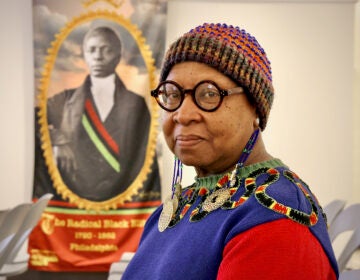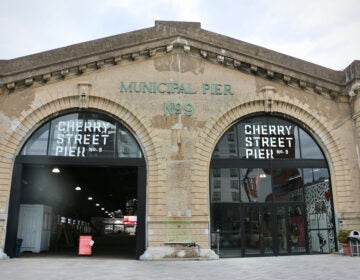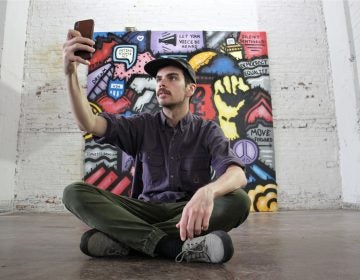An anti-advertising campaign of artwork takes over Philadelphia subway station
Thirty Philadelphia artists submitted work that has replaced all advertising in the Walnut-Locust Station.
Listen 1:53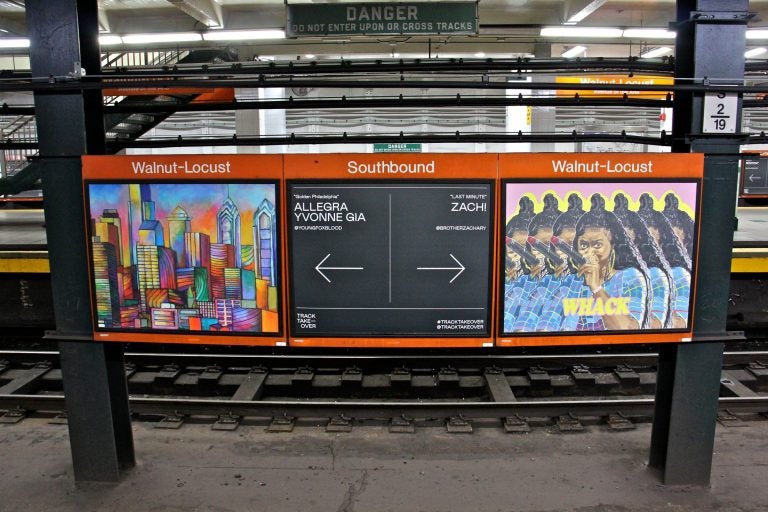
The Walnut-Locust subway station has become a gallery for 30 local artists who participated in "Track Take-Over." (Emma Lee/WHYY)
Dozens of artists have taken over the SEPTA subway station walls at Walnut Street in Philadelphia.
For the next month, all the advertising billboards along the underground station platforms — northbound and southbound — have been replaced with the work of 30 artists. There are no company brands, slogans, or sales messaging. Most of the works have no words at all.
“Knowing that they are going to create something that is going to be seen by roughly 6,000 people every day, we wanted them to create something that would make them excited, and they would want to get in front of other people,” said Brendan Lowry of the creative agency Rory, who coordinated (with Conrad Benner of the blog StreetsDept.com) this anti-advertising campaign, called Track Takeover.
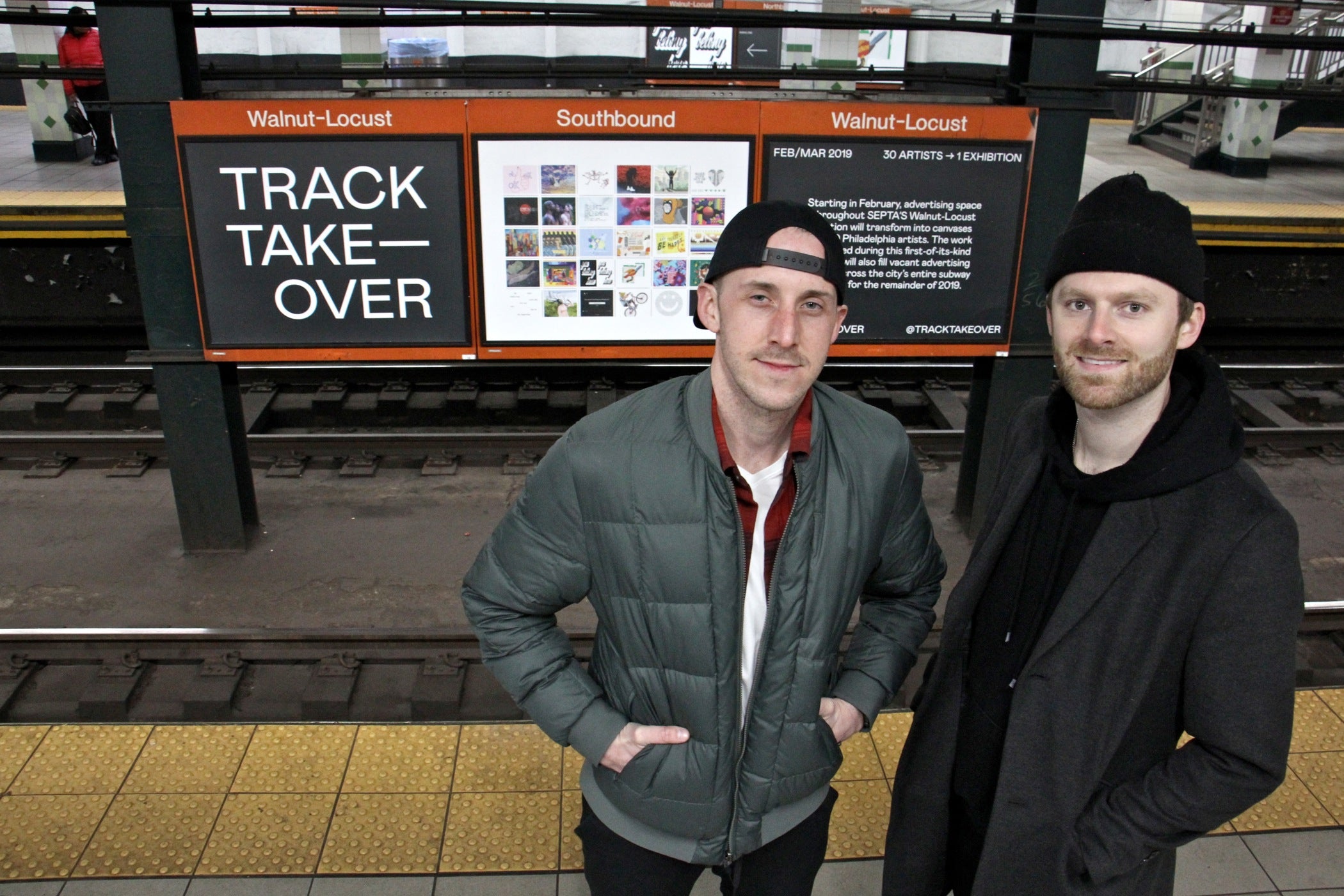
The Takeover is not rogue street art. The ad spaces were paid for and the artwork installed professionally. The pieces range from inspirational works of social unity and belonging, to Philly-centric images, to more interpretive creations — such as the photograph of a woman flinging her very long braids or an illustration of two stick-man skeletons glowing pink.
Marcus Branch, a Philadelphia photographer and video artist, submitted a photograph of five men standing in a row, eyes closed, without shirts. Collectively, they are a spectrum of skin tones from pale to quite dark. Branch calls it “An Ode to Autumn.”
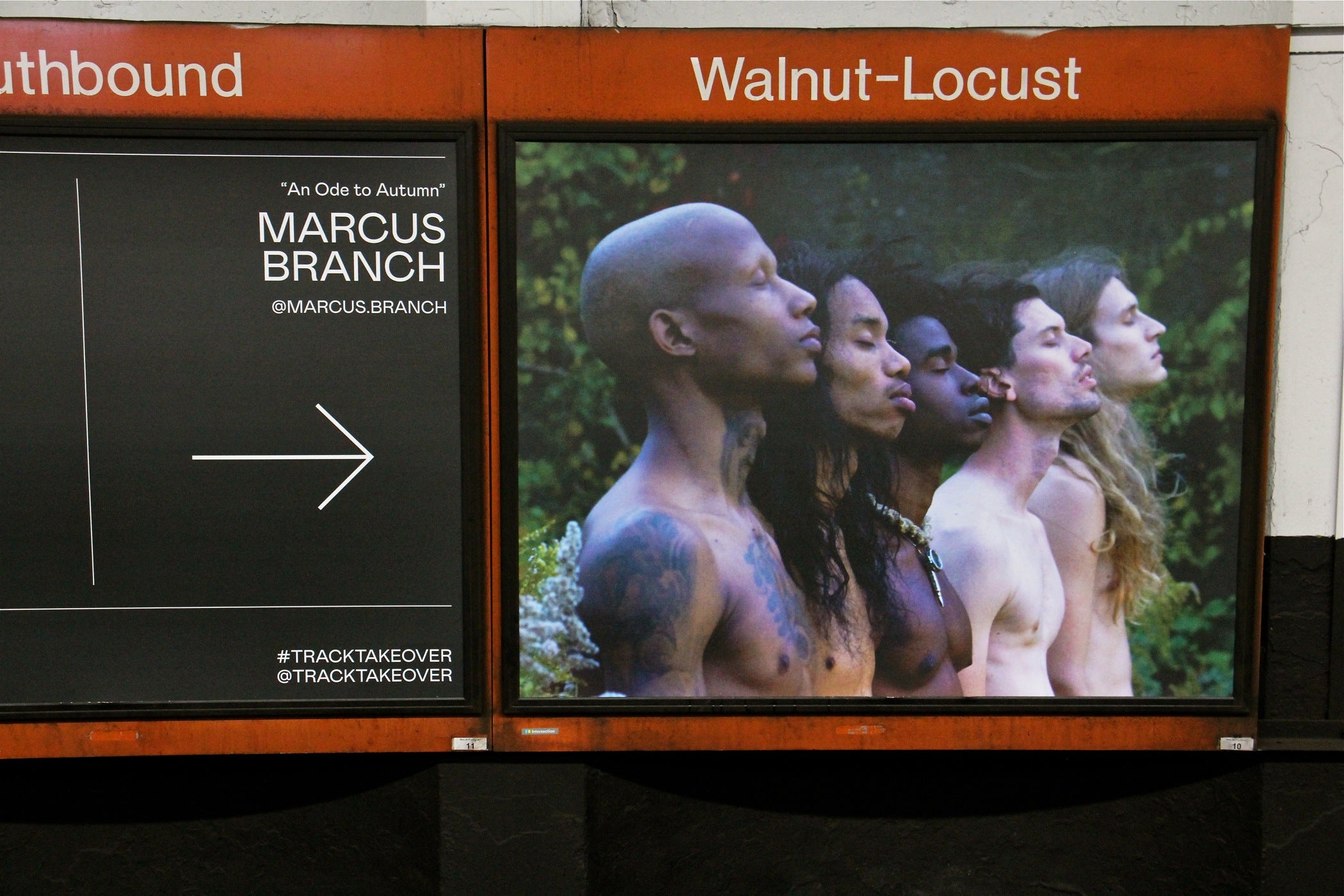
“If I’m rooting for us as a people to become more unified and celebrate one another, I must perform that by actually doing it,” he said. “To have that in a public space and be seen by everyone – not just by people interested in my art – I’m hoping to contribute to the change I want to see.”
Branch’s piece and others have a message, but they are advertising a state of mind rather than a commercial enterprise. The intention is to use a public space to encourage thinking more aesthetically, perhaps abstractly, and not how to spend dollars.
“The 6,000 people that are passing through here on a daily basis are going to look at this work, hopefully feel something, and maybe make them feel differently about this space in the future,” said Lowry.
Domination gives way to creation
In the advertising world, when a single company buys out all the advertising in an entire station, it’s called a “domination.” You see domination in stations, for example, by Independence Blue Cross.
The NRG energy company not only bought the naming rights of the SEPTA station at the sports stadiums, but paid to have train car doors wrapped in vinyl branding messages. Sometimes vinyl coverings on floors and stair treads shout out ads.
City Fitness, a chain of gyms, is the money behind Track Takeover. Its vice president of marketing, Tom Wingert, recalled talking to a representative at the company that manages SEPTA ads, Intersection.
“He was saying we can do a Walnut Street domination. I said, ‘Woah, that seems a little aggressive.’ There is an extent to where you can print too much, and it may be overkill,” Wingert said.
Wingert decided against the vinyl wraps and flooring, limiting the artwork to billboard spaces. However the arrangement goes beyond Walnut Street: After the one-month station takeover, any unused ad spaces throughout the entire SEPTA system – billboards that are between client buys – will be installed with artwork for the rest of 2019.
The artists were paid for their works, which are labeled with their names and Instagram handles. City Fitness hopes to generate a social media conversation.
City Fitness was behind the Trashcan Takeover last summer when work by 18 artists was installed in ad spaces on the faces of Big Belly trash cans in Rittenhouse. Even though the ad buy ended months ago, most of those images are still on the street.
The City Fitness logo is not visible in any of the imagery. Wingert does not expect a significant uptick in gym memberships from this anti-advertising campaign. Nevertheless, he paid about $50,000 (for the ad buy, to print the artwork, and to pay the artists) out of his annual advertising budget.
“It’s a big part of my year, but I believe in this work, and it’s good for the brand,” he said. “It’s not about, ‘We’re going to do this activation and get X amount of gym memberships.’ That’s not how I think, and that’s not how we think. What we want to do is find ways to be a better part of Philadelphia using our skills and expertise.”
WHYY is your source for fact-based, in-depth journalism and information. As a nonprofit organization, we rely on financial support from readers like you. Please give today.



